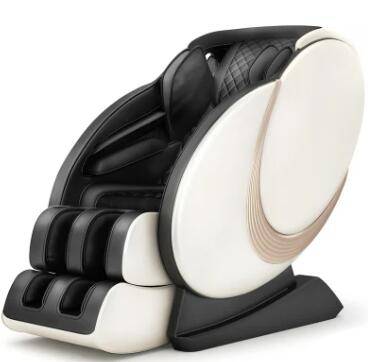Unwinding the Knots: Understanding the Difference Between Air Compression and Rollers in Massage Chairs
2023-12-07
Introduction:
Massage chairs have become popular fixtures in homes and wellness centers, offering a convenient and effective way to relax and rejuvenate. Two common technologies employed in massage chairs are air compression and rollers, each offering a distinct approach to delivering a soothing massage experience. In this exploration, we unravel the differences between air compression and rollers, shedding light on how these technologies contribute to the diverse world of massage chairs.
Air Compression Massage:
1. Mechanism:
Air compression massage in chairs involves the use of airbags or chambers strategically placed throughout the chair. These airbags inflate and deflate rhythmically to create a squeezing or compressing motion against different parts of the body.
2. Coverage:
Air compression is often employed for broader coverage, targeting larger muscle groups such as the arms, legs, and hips. Multiple airbags work in harmony to envelop the limbs and create a sensation of gentle pressure, promoting circulation and relaxation.
3. Intensity Control:
The intensity of air compression massage can typically be adjusted to suit individual preferences. Users can choose between gentle, moderate, or intense compression levels, allowing for a customizable experience based on personal comfort and massage needs.
4. Benefits:
Air compression massage is known for its ability to alleviate muscle tension, improve blood circulation, and reduce swelling in the extremities. It's particularly effective for promoting relaxation and providing a full-body massage experience.
Roller Massage:
1. Mechanism:
Rollers in massage chairs are mechanical components that move along a predefined track. These rollers mimic the kneading, tapping, rolling, or shiatsu techniques used in traditional massage therapy. The intensity, speed, and direction of the rollers can be adjusted for a personalized massage experience.
2. Coverage:
Roller massage is more localized and precise compared to air compression. The rollers are designed to target specific areas of the body, such as the neck, shoulders, back, and lower body. This allows for a more targeted and deep tissue massage experience.
3. Intensity Control:
Similar to air compression, roller massage chairs provide users with the ability to control the intensity of the massage. This feature ensures that individuals can tailor the massage to their preferences and accommodate different sensitivity levels.
4. Benefits:
Roller massage is renowned for its ability to address specific muscle knots, improve flexibility, and offer a therapeutic massage experience. It is often favored by individuals seeking relief from chronic pain or muscle stiffness in particular areas.
Combination Systems:
1. Hybrid Models:
Some advanced massage chairs integrate both air compression and roller technologies. This combination allows users to enjoy the benefits of broad coverage and gentle compression from airbags, along with the targeted and customizable massage provided by rollers.
2. Program Options:
Massage chairs often come with pre-programmed massage sequences that seamlessly blend air compression and roller techniques. These programs are designed to offer a comprehensive and well-rounded massage experience that addresses various muscle groups and relaxation needs.
Conclusion:
The choice between air compression and rollers in massage chairs ultimately depends on individual preferences and specific therapeutic goals. While air compression provides a more enveloping and relaxing experience, rollers excel in targeting specific areas and offering a deeper tissue massage. The ideal solution may lie in hybrid models that combine both technologies, offering users the versatility to enjoy the best of both worlds. Whether it's the gentle embrace of airbags or the precise kneading of rollers, the diverse options available in modern massage chairs ensure that individuals can find the perfect massage experience tailored to their unique preferences and needs.



